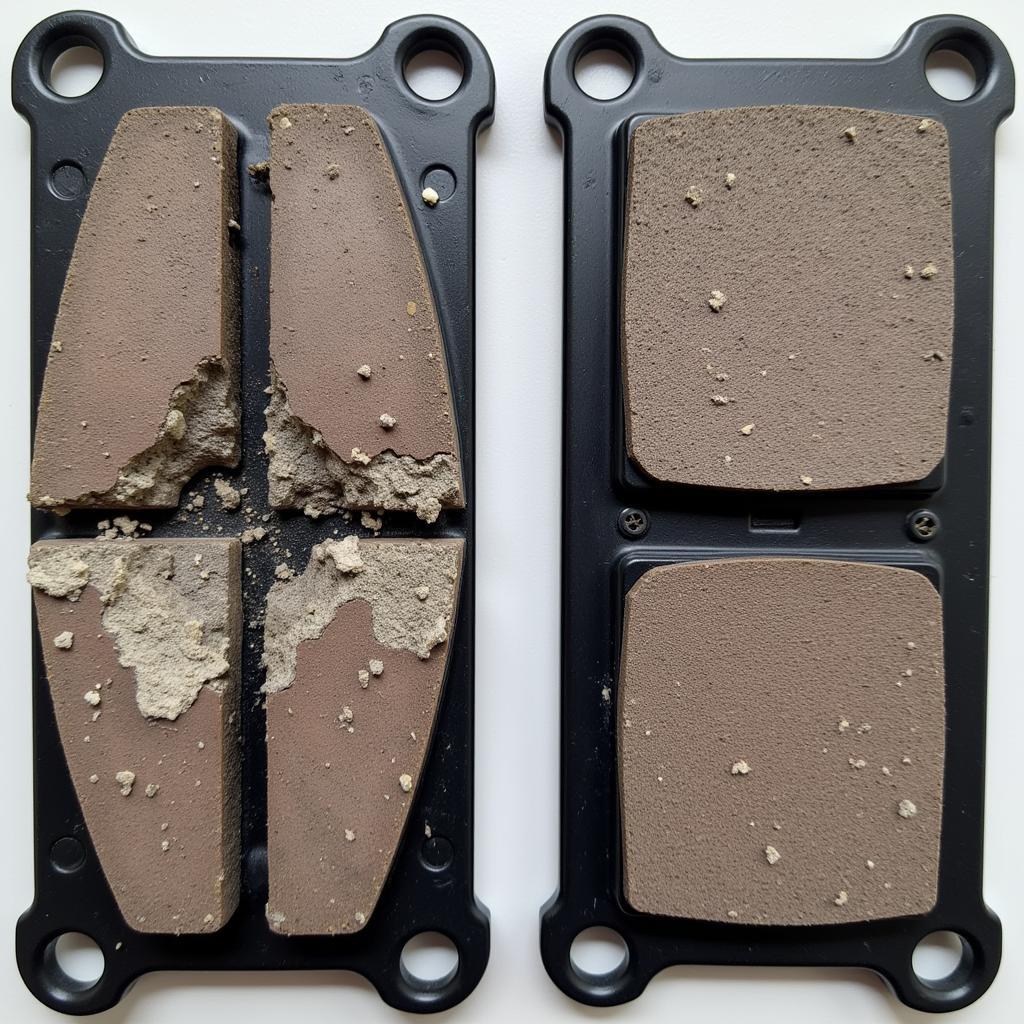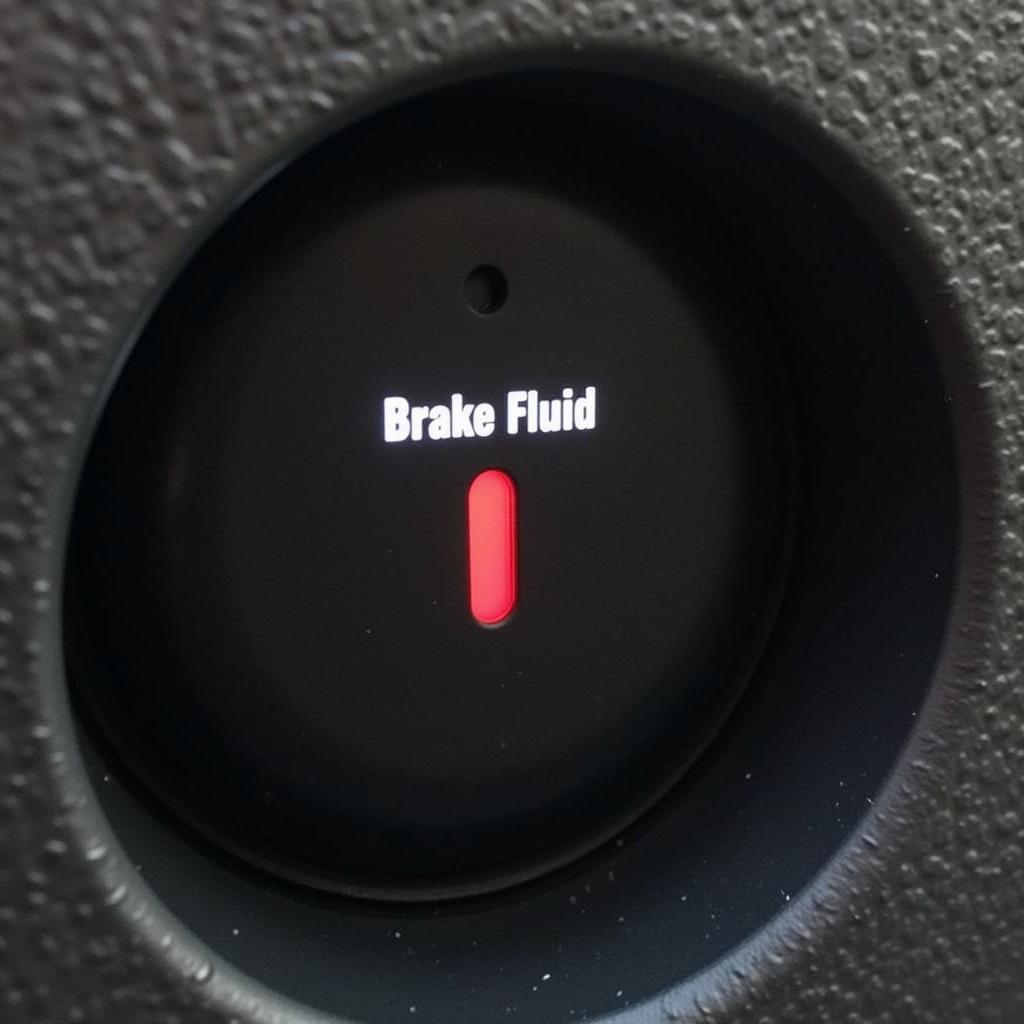The dreaded brake warning light. Seeing it illuminate on your dashboard can send a shiver down any driver’s spine, especially in a powerful workhorse like the 2009 F150. But before you panic, remember that this light doesn’t always signal a catastrophic failure. This comprehensive guide will walk you through the possible reasons why your 2009 F150 brake warning light is on and equip you with the knowledge to address the issue effectively.
Why is My Brake Warning Light On?
Your 2009 F150’s brake warning light is part of its essential safety system, designed to alert you to potential problems within the braking system. Several factors can trigger this light, ranging from minor inconveniences to more serious issues.
1. Low Brake Fluid Level:
This is one of the most common culprits behind an illuminated brake warning light. Brake fluid is the lifeblood of your braking system, transmitting the force from your foot on the pedal to the brakes themselves.
How to Check:
- Locate the brake fluid reservoir under the hood. It’s usually a translucent plastic container with a black cap.
- Check the fluid level against the “Min” and “Max” markings on the side of the reservoir.
What to Do:
- If the fluid level is low, add the correct type of brake fluid (DOT 3 or DOT 4, as specified in your owner’s manual).
- Important: If you need to add brake fluid frequently, it indicates a leak in your system that requires immediate professional attention.
2. Worn Brake Pads:
Your brake pads are designed to wear down over time. They contain wear indicators that make a high-pitched squealing sound when they’re getting thin. If ignored, this sound can disappear completely as the pads wear down further, leading to the brake warning light illuminating.
How to Check:
- Look through the spaces between your wheel’s spokes.
- You should be able to see the brake pad pressed against a metal rotor.
- If the pad material is less than ¼ inch thick, it’s time for a replacement.
 Worn brake pads next to a new brake pad
Worn brake pads next to a new brake pad
What to Do:
- Replace your brake pads. It’s recommended to have a professional mechanic do this as it involves working with essential safety components.
3. Faulty Brake Light Switch:
While it might seem counterintuitive, a faulty brake light switch can also trigger your brake warning light. This switch is located behind your brake pedal and signals your brake lights to illuminate when you press the pedal.
How to Check:
- Have a helper observe the brake lights while you press the pedal.
- If the brake lights don’t illuminate, the switch might be faulty.
What to Do:
- Replacing a brake light switch is a relatively simple repair that you can do yourself or have a mechanic handle.
4. ABS Issues:
Your 2009 F150 is equipped with an Anti-lock Braking System (ABS) that helps prevent wheel lockup during hard braking. If the ABS module or one of its components malfunctions, it can trigger the brake warning light.
How to Check:
- Unfortunately, diagnosing ABS issues usually requires specialized diagnostic tools that most DIYers don’t have.
What to Do:
- If you suspect an ABS issue, take your F150 to a qualified mechanic or dealership for diagnosis and repair.
2009 F150 Brake Warning Light and Check Engine Light: A Double Whammy?
In some cases, you might find both your brake warning light and check engine light illuminated simultaneously. This can be particularly concerning as it broadens the potential issues.
Here’s what you should know:
- Shared Sensors: Some sensors, like the wheel speed sensors, provide data to both the ABS and engine control unit. A faulty sensor can trigger both warning lights.
- Electrical Issues: Wiring problems or a failing alternator can affect multiple systems, including your brakes and engine.
In these situations, it’s crucial to have your vehicle inspected by a qualified mechanic equipped with the right diagnostic tools. They can pinpoint the root cause and recommend the appropriate repairs.
Remote Diagnostics and Software Solutions: The Future of Car Repair
“Can I fix my 2009 F150 brake warning light remotely?” You might be surprised to learn that in some cases, the answer is yes! As a specialist in remote automotive electrical diagnostics, programming, and software installation, I utilize cutting-edge technology to diagnose and even repair certain vehicle issues remotely.
Here’s how it works:
- Connect Your Vehicle: You’ll need a compatible OBD-II scanning device that plugs into your F150’s diagnostic port.
- Remote Session: I can access your vehicle’s data remotely through a secure connection.
- Diagnosis and Repair: I can read fault codes, analyze live data streams from various sensors, and in some cases, even reprogram certain modules to resolve software-related issues—all without ever setting foot in your garage!
This technology is particularly beneficial for:
- Software Glitches: Addressing software bugs or conducting module updates remotely.
- Sensor Calibration: Recalibrating certain sensors after a repair or component replacement.
While remote diagnostics can’t physically fix a broken brake line or worn brake pads, it offers a powerful tool for identifying issues and potentially resolving them without visiting a repair shop.
Ignoring Your Brake Warning Light: A Gamble You Shouldn’t Take
Your brake system is your vehicle’s most important safety feature. Ignoring a brake warning light is akin to playing Russian roulette with your safety and the safety of others on the road.
Remember:
- Early Detection is Key: Addressing issues early often results in less costly repairs.
- Safety First: Your brakes are non-negotiable when it comes to safety.
Conclusion:
The illuminated brake warning light in your 2009 F150 is a serious signal, demanding your attention. Whether it’s a minor issue like low brake fluid or something more complex, addressing it promptly is essential. By following the guidelines in this guide and seeking professional help when needed, you can ensure your F150 remains the reliable and safe workhorse it was designed to be.



